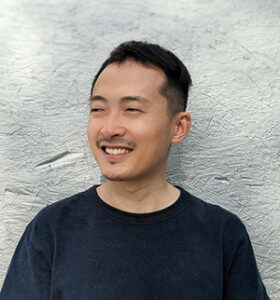What do malls in Flushing, food courts in Long Island City and a viral TikTok meme all have in common? For a team of designers and researchers at City College, they’re clues to a deeper story about space, memory and migration.

Zihao Zhang. Photo Courtesy: CCNY
Assistant Professor Zihao Zhang, independent urban designer Shurui Zhang and CCNY Master’s of Landscape Architecture candidate Wenhao Hu are documenting what they call “Chinese diasporic urbanism”— a term they use to describe how waves of Chinese migration have reshaped parts of Queens through imagination, adaptation and architectural translation.
The New York State Council on the Arts and the Architectural League of New York awarded one of several $10,000 Independent Projects grants to the Spitzer School of Architecture faculty member for the project.
Titled “Chinatown is Chinatown; Flushing is China,” the project zeroes in on two Queens neighborhoods: Flushing, a long-established Mandarin-speaking enclave, and Long Island City, a relatively newer hub of luxury development increasingly shaped by Chinese capital and culture.
The title itself, borrowed from a meme circulated on TikTok by Chinese international students, hints at a generational and spatial distinction. Manhattan’s Chinatown and Flushing are especially differentiated linguistically, with Cantonese more commonly spoken in Manhattan and Mandarin Chinese in Flushing, making the latter more attractive to immigrants from Mainland China after the 1980s, Zhang said.
“Shurui and I live in Queens. Our repeated visits to Flushing for authentic Chinese food and produce over the past few years sparked the initial idea to do research based in Flushing,” Zhang told The RICC.
Their research weaves together fieldwork, mapping, photography and informal interviews. “Because we’re designers, we want to wrap this research with some kind of speculative design to tell the stories of Flushing,” Zhang explained, saying the process is ongoing.
What emerges is a portrait of urban development shaped as much by memory and aspiration as by zoning maps or top-down planning.
As an example, Flushing has become a magnet for Mandarin-speaking immigrants. Developers have responded with architecture that mirrors Chinese urban typologies — mixed-use mega-complexes like Tangram Mall or Fulton Square that feel pulled from the playbook of early 21st-century Shanghai.
“Different generations will have different urban imaginations of course, and the urban environment reflects these imaginations,” Zhang said. “Flushing looks like a small Chinese city in the 1980s and 90s.”
Long Island City, meanwhile, is less organic and more vertical, shaped by rezoning and capital investment, with high-rise towers marketed heavily — often in Mandarin — toward young professionals and students from China.
The number 7 train stitches the two neighborhoods together, giving Chinese Gen Zs and millennials the chance to live in LIC’s gleaming towers and, “when homesick, go to Flushing,” as one social media post included in the team’s project proposal put it.
Zhang and his collaborators see the phenomenon not as anomalous but more an example of how diasporic communities build resourceful, adaptive urbanisms. The prevailing narrative, along with its “weedy” moniker, needs to change, Zhang said.
“Like weedy species, Chinese immigrants are opportunistic, making homes from whatever resources are available,” Zhang said. “This normalizing narrative reinforces a sense of perpetual otherness for Chinese Americans. But it’s just as true to say that Chinese immigrants revitalized a declining Flushing. We need a different narrative.”
The team’s background in landscape architecture, urban design and visual storytelling shapes the lens of the work, even if the project departs from Zhang’s more technical research in climate resilience or robotics.
At CCNY, Zhang connects the themes of this work with his teaching. He taught a studio last year in which students studied Flushing Bay and its surrounding developments — including a proposed $8 billion casino near Citi Field. Zhang hopes to launch another design research studio this fall focused on the same area, he said, deepening student engagement with the site and its layered histories.
Looking ahead, the team hopes to turn their work into an academic paper and organize an exhibition. A bilingual podcast episode is also in the works to bring the project to wider audiences in both English and Mandarin.
Ultimately, “Chinatown is Chinatown; Flushing is China” is positioned as less a project simply about two neighborhoods in Queens than one rethinking how urban space is made, who gets to shape it and how culture travels — in this case, not just across oceans, but subway stops.
Judah Duke is a journalist who graduated from CUNY Baruch College in 2024 with a degree in Journalism. He has reported on business, real estate and the environment across Texas and New York City and is currently pursuing a master’s degree at Columbia Journalism School, specializing in investigative reporting.